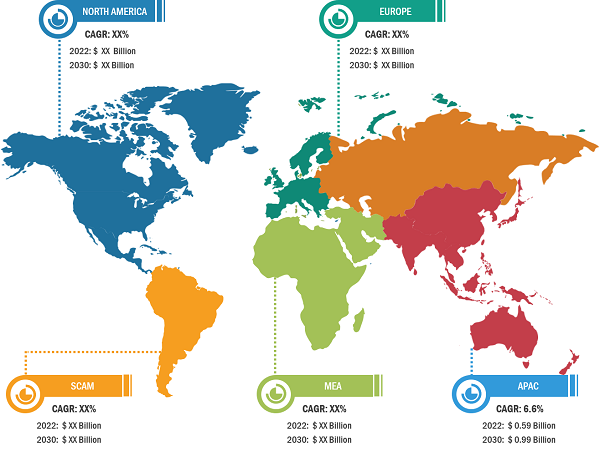Viral Vectors Segment Based on Vectors Fuels Gene Therapy Market
According to our new research study on “Gene Therapy Market Forecast to 2031 – Global Analysis – by Vectors, Indication, and Delivery Mode,” the market size is expected to reach US$ 12.92 billion by 2031 from US$ 5.06 billion in 2024. The market is expected to register a CAGR of 14.5% during 2025–2031. The growing burden of genetic diseases fuels FDA approvals for gene therapies. Additionally, advancements in gene therapy technologies are expected to influence market trends in the coming years. However, the high cost of gene therapy products hinders gene therapy market growth.
Advanced genetic engineering technologies, particularly CRISPR/Cas9, base editing, and improved viral vectors, allow for precise, efficient, and safer modifications to the human genome, accelerating the development and application of therapies. CRISPR clinical trials are moving beyond initial phases to address a wide array of diseases, including blood disorders such as sickle cell disease and beta-thalassemia, various types of cancers, and cardiovascular diseases. According to the Innovative Genomics Institute, as of 2022, clinical trials are being conducted in seven treatment areas: blood disorders, cancers, inherited eye diseases, diabetes, infectious diseases, inflammatory diseases, and protein-folding disorders.
Gene Therapy Market, by Region, 2024(%)
Gene Therapy Market Size and Forecast (2021 - 2031), Global and Regional Share, Trend, and Growth Opportunity Analysis Report Coverage: By Vectors (Non-Viral Vectors and Viral Vectors), Indication (Neurological Diseases, Cancer, Duchenne Muscular Dystrophy, Hepatological Diseases, and Other Indications), Delivery Mode (In-Vivo and Ex-Vivo)
Gene Therapy Market Size, Growth and Forecast 2025-2031
Download Free Sample
Source: The Insight Partners Analysis
Prime editing extends capabilities to insert or delete sequences accurately, as seen in therapies for cystic fibrosis, where it corrects CFTR mutations with 95% efficiency, reducing lung complications and validating the technology's role in expanding treatable diseases.
Epigenetic editing modulates gene expression without altering DNA, targeting neurodegenerative diseases such as Alzheimer's. These innovations lower costs and foster collaborations, including between academic institutions and companies such as Editas Medicine, driving the gene therapy market growth.
The focus on non-coding RNAs (ncRNAs) and next-generation sequencing (NGS)-based diagnostics is expected to emerge as a key gene therapy market trend in the future. NcRNAs, including miRNAs and lncRNAs, are explored for therapeutic targeting, while NGS enables comprehensive genomic profiling for precise diagnostics, integrating with gene therapies for monitoring and intervention.
Gene Therapy Market Analysis Based on Segmental Evaluation:
Based on vector, the market is categorized into non-viral vectors and viral vectors. The viral vectors segment held a significant gene therapy market share in 2024 and is projected to register a higher CAGR during the forecast period. A viral vector provides an efficient way to transfer genes to alter a particular cell type or tissue, which can be used to express therapeutic genes. Due to their ability to transport several copies of therapeutic genes to host cells, viral vectors are commonly used in gene therapy. An extensive range of viral vectors is used in these therapies, including the vectors developed for short-term and long-term gene expression. Adeno-associated viruses (AAV), baculoviruses, and herpes simplex viruses are examples of viral vectors used in gene therapy applications. The effectiveness of transgene expression, ease of production, and safety, toxicity levels, and stability are considered when choosing a virus for routine clinical use.
Based on indication, the market is categorized into neurological diseases, Duchenne muscular dystrophy, cancer, hepatological diseases, and other indications. The cancer segment held a significant gene therapy market share in 2024.
Based on delivery mode, the market is bifurcated into in-vivo and ex-vivo. The in-vivo segment held a significant gene therapy market share in 2024 and is expected to register a higher CAGR during 2025–2031.
The scope of the gene therapy market report includes an assessment of the market performance in North America, Europe, Asia Pacific, South and Central America, and the Middle East and Africa. As per revenue, North America dominated the gene therapy market share in 2024.
The US leads the market in North America due to the rising prevalence of genetic disorders, the rising number of cancer patients, increasing government funding, the rising adoption of advanced gene therapy for disease treatment, and rising product approvals.
Novartis AG, Astellas Pharma Inc, Bristol-Myers Squibb Co, Bluebird Bio Inc, Catalent Inc, Sanofi SA, Daiichi Sankyo Co Ltd, CSL Behring LLC, BioMarin Pharmaceutical Inc., and Vertex Pharmaceuticals Inc. are among the leading companies profiled in the gene therapy market report.
Geographically, the gene therapy market analysis is categorized into North America (the US, Canada, and Mexico), Europe (France, Germany, the UK, Spain, Italy, and the Rest of Europe), Asia Pacific (China, Japan, India, South Korea, Australia, and the Rest of Asia Pacific), the Middle East & Africa (Saudi Arabia, South Africa, the UAE, and the Rest of Middle East & Africa), and South & Central America (Brazil, Argentina, and the Rest of South & Central America). The gene therapy market in Asia Pacific is experiencing the fastest growth. The rising focus on research and development activities, the rising need for superior treatment solutions, the developing healthcare infrastructure, the rising chronic and genetic diseases, and the increasing investments to boost the research activities in genomics fuel the Asia Pacific gene therapy market growth. China and Japan are the major contributors to the gene therapy market in APAC.
Contact Us
Phone: +1-646-491-9876
Email Id: sales@theinsightpartners.com